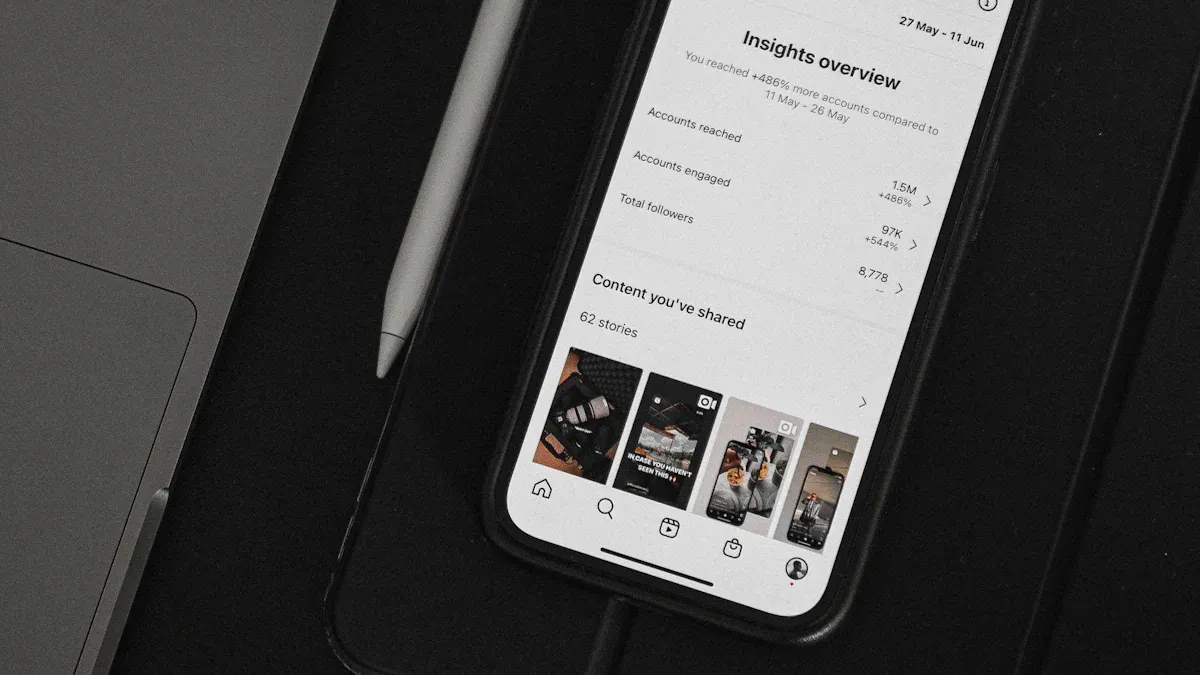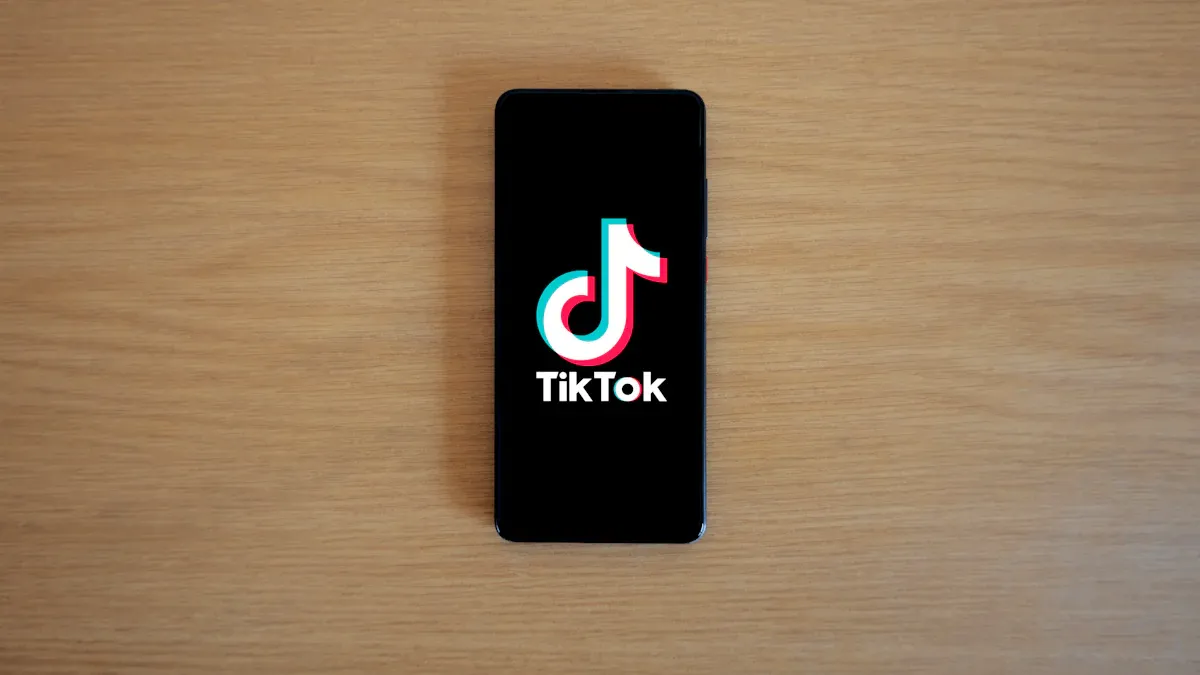TikTok Data API

You can use the TikTok Data API to access a wide range of TikTok data, including public content, analytics, and user information. TikTok offers several types of APIs—official, unofficial, and third-party—each with unique features. With TikTok’s global reach at 1.59 billion users in 2025, the TikTok API lets you track viral hashtags, monitor influencer metrics, and analyze trends. Many marketers and analysts rely on the TikTok Data API for real-time data and actionable insights that shape digital strategies.
Key Takeaways
The TikTok Data API lets you access public TikTok data like user profiles, videos, comments, and hashtags to help with marketing and analysis.
You must create a TikTok developer account and follow the OAuth process to get access tokens needed for API requests.
Official TikTok APIs offer reliable data but have limits and strict rules; unofficial and third-party APIs can provide more flexibility and features.
Always follow TikTok’s rules, protect your access tokens, and use HTTPS to keep your data and users safe.
Plan your API use carefully, handle errors well, and keep your data updated to get the best results from TikTok data.
TikTok API Overview

Official TikTok APIs
When you use the official TikTok API, you get access to a set of tools that help you connect with TikTok’s huge audience. The TikTok API lets you log in, post content, manage ads, and track analytics. You can use the API to gather performance metrics, user insights, and video data. TikTok has over 1.5 billion monthly active users, and each user spends more than 6 hours per week on the platform. This shows how important the TikTok API is for businesses and developers who want to reach a large audience.
The TikTok API ecosystem supports many business needs, including e-commerce through TikTok Shops. This makes the API a valuable tool for growing your brand and increasing engagement.
You can see some key statistics about TikTok and its API in the table below:
Metric/Aspect | Details/Statistics |
|---|---|
Monthly Active Users | Over 1.5 billion |
Average User Engagement | Users spend over 6 hours per week on TikTok |
Consumer Spending | Surpassed $10 billion |
TikTok API Capabilities | Access to performance metrics, ad management, user insights, video content posting |
Limitations of Native TikTok API | High integration costs, developer dependency, siloed data, infrastructure and compliance demands |
The TikTok API has strong data retrieval power. Over 577,517 TikTok videos were collected using the TikTok Research API from 2018 to 2023. The API allows up to 1,000 requests per day, with each request returning up to 100 items. This means you could get up to 100,000 items daily, but real-world use often reaches only about 65% of this limit.
Unofficial and Third-Party APIs
You might find that the official TikTok API has some limits. Researchers have reported server errors, missing data, and strict rate limits. Sometimes, the TikTok API gives different results for the same query, which can make your work harder. Because of these issues, some people use unofficial or third-party APIs to get TikTok data.
Unofficial APIs, like some Python libraries, can help you collect TikTok video metadata. In one study, a modified unofficial API retrieved data for 88% of unique TikTok videos. The missing 12% came from videos that were removed or set to private. Third-party APIs, such as the Phyllo API, offer extra features. They provide creator-consented data, real-time updates, and privacy compliance. These APIs can help you target your audience better and improve your content strategy.
Researchers sometimes prefer unofficial APIs or web scraping because the official TikTok API can be unreliable.
Third-party APIs can automate data refreshes and send notifications, making your workflow smoother.
If you want more reliable or flexible access to TikTok data, you may want to explore unofficial or third-party API solutions.
Getting Started
Prerequisites
Before you use the TikTok API, you need to prepare a few things. First, you must create a TikTok developer account. This account gives you access to the TikTok API and its features. You also need to decide what kind of data you want to collect. Some people use the API for analytics, while others want to manage ads or gather public content.
You should check if your project needs special permissions. For example, if you want to manage audiences or upload customer files, you must request the Audience Management scope. Make sure you have a clear goal for your API integration. This helps you choose the right tools and speeds up the setup process.
Tip: Write down your goals and the data you need. This will help you during registration and when you start using the API.
API Registration
You can register your app with the TikTok API by following a few clear steps. Here is a simple guide to help you:
Create a new app in your TikTok developer account. Choose the right permissions, such as Audience Management, if needed.
After you create the app, you will get an App ID, Secret, and Advertiser ID. Keep these safe because you need them for every API request.
To start the authorization process, go to the special authorization URL for your app. Review the permissions and approve them. The system will add an authentication code to your redirect URL.
Exchange this code for a long-lived access token. Send a POST request to the TikTok OAuth2 endpoint. Include your app_id, auth_code, and secret in the request.
If your request is successful, you will get an access token. You can use this token for future API calls.
Here is a sample POST request for the token exchange:
POST https://business-api.tiktok.com/open_api/v1.2/oauth2/access_token/
Headers:
Content-Type: application/json
Body:
{
"app_id": "your_app_id",
"secret": "your_app_secret",
"auth_code": "your_auth_code"
}
You can find more details and sample responses in the TikTok API documentation. These steps help you set up a secure and reliable API integration. As a developer, you should always follow the latest guidelines to keep your data safe.
Authorization & Access
OAuth Process
When you want to use the TikTok Data API, you must follow the OAuth 2.0 process. This process helps you connect your app to TikTok safely. OAuth 2.0 lets you get data from the api without needing user passwords. You use a special code to get an access token, which proves you have permission to use the api.
Here is how the OAuth process works:
You create a Client ID and Client Secret for your app.
You set up your Webhook URL and Token URL.
You send your Client ID and Client Secret to the Token URL to ask for an access token.
The api gives you an access token if your request is correct.
You use this access token in the Authorization header when you make api requests.
You can check if your access token is valid by asking the api to confirm it.
Always use HTTPS when you send data to the api. This keeps your access token safe from hackers.
The table below shows the main fields you need for the OAuth process:
Parameter/Field | Required | Description |
|---|---|---|
grant_type | Yes | Must be "client_credentials" for this OAuth flow. |
client_id | Yes | Your app's Client ID. |
client_secret | Yes | Your app's Client Secret. |
scope | No | The permissions you want. |
Access Tokens
The access token is your key to the TikTok Data API. You must include the access token in every api request. The api checks your access token to make sure you have permission. If your access token is missing or expired, the api will not let you get data.
You may notice that access tokens do not always last the same amount of time. Some expire in a few hours, while others last for weeks. To avoid problems, you should store your access token and refresh token in a safe place. Many developers use manual OAuth flows to control when they refresh the access token. You can also use tools like Pathfix or api connectors to automate this process.
Here are some best practices for managing your access token:
Store your refresh token securely.
Refresh your access token before it expires.
Set up your redirect URIs and authorization flows correctly.
Use the api’s token validation endpoint to check if your access token is still good.
You may face challenges with the api, such as strict rate limits or bans if you send too many requests. The table below compares the official TikTok api with third-party apis:
Aspect | Official TikTok API | Third-Party APIs (e.g., Data365) |
|---|---|---|
Rate Limits | Up to 100 requests per second | |
Authorization Challenges | Frequent bans and restrictions; complex permissions | Flexible permissions, fewer bans |
Access Guarantees | No guarantee, even with paid plans | Large-scale data extraction, no speed loss |
Pricing | Fixed plans, limited | Flexible pricing, free trials |
Data Quality and Consistency | Reliable but limited by bans | High-quality, automated, cost-effective |
Support and Documentation | Standard | Clear docs, live support |
If you want more flexibility, you can try third-party apis. They often offer faster access and better support for your access token needs.
Query TikTok Public Content Data

When you use the TikTok Data API, you can query TikTok public content data to get valuable insights for your projects. You can collect information about user profiles, videos, comments, and hashtags. This section will show you how to access public TikTok account data, what you can expect from official and unofficial APIs, and how to use this data for analytics and audience research.
User Profiles
You can query public account information from TikTok to learn more about creators and influencers. The TikTok Data API and third-party tools let you collect details such as user IDs, nicknames, avatars, bios, verification status, region, language, and follower counts. This data helps you understand audience demographics and engagement patterns.
For example, the TikTok User Profile Scraper from Apify can extract:
Unique user IDs and nicknames
Avatars and profile URLs
Bio links and signatures
Verification status and account type
Region and language
Video counts, follower counts, heart counts (likes), and friend counts
You can use this information to identify high-engagement influencers, track audience demographics, and build marketing strategies. Many influencer marketing agencies use TikTok Data Readers to query follower counts and engagement rates. A digital marketing agency might extract engagement metrics from TikTok videos to measure content performance and refine their campaigns. Market research firms often gather TikTok data from different regions to spot global trends.
Here is a sample API request to get a user's public profile data:
GET https://open.tiktokapis.com/v1/user/info/?unique_id=username
Headers:
Authorization: Bearer {access_token}
A typical response might look like this:
{
"user_id": "123456789",
"nickname": "tiktokstar",
"avatar": "https://p16-sign-va.tiktokcdn.com/...",
"signature": "Welcome to my TikTok!",
"verified": true,
"region": "US",
"language": "en",
"follower_count": 500000,
"video_count": 120,
"heart_count": 2000000
}
You can use both official and unofficial APIs to collect user profile data, but unofficial APIs may offer more flexibility and fewer restrictions.
TikTok Video Data
You can query TikTok video data to analyze trends, measure performance, and track the most recent TikTok videos. The TikTok Data API allows you to retrieve video metadata, such as video IDs, captions, hashtags, view counts, like counts, share counts, and post dates. You can also get analytics on each TikTok post, including engagement rates and audience demographics.
Many businesses use video data to optimize their TikTok post strategies. For example, Saras Daton, an ETL tool, automates TikTok Shop data retrieval and cleaning. Brands like CeraVe saw a 300% sales increase after their TikTok video went viral. Princess Polly improved ad efficiency by 20% using data-driven retargeting. These cases show how accurate video data and analytics can drive business growth.
You can use the following API request to get the most recent TikTok videos from a user:
GET https://open.tiktokapis.com/v1/video/list/?user_id=123456789&count=10
Headers:
Authorization: Bearer {access_token}
A sample response:
{
"videos": [
{
"video_id": "987654321",
"caption": "Check out my new dance!",
"hashtags": ["#dance", "#fun"],
"view_count": 100000,
"like_count": 15000,
"share_count": 2000,
"comment_count": 500,
"post_date": "2024-05-15T14:30:00Z"
},
...
]
}
You can analyze up to the max count of TikTok videos allowed by the API, which is usually 100 per request. If you want to track recent TikTok videos, you can use pagination to get more data. Unofficial APIs and scraping tools may let you bypass some limits, but you should always respect TikTok's terms of service.
TikTok analytics tools help you track video performance, measure engagement, and discover what makes a TikTok post go viral.
Comments and Hashtags
You can query comments and hashtags from TikTok posts to understand audience reactions and trending topics. The TikTok Data API and research APIs provide structured access to comments, threaded replies, and hashtags. This data supports sentiment analysis, trend monitoring, and audience engagement studies.
A large-scale study used the TikTok Research API to analyze over 500,000 videos from 2018 to 2023. The study found that videos with viral hashtags had much higher views and likes than those without. Hashtag analysis also revealed geographic trends and helped brands discover what content resonates with different audiences.
You can use the following API request to get comments from a TikTok video:
GET https://open.tiktokapis.com/v1/video/comment/list/?video_id=987654321&count=50
Headers:
Authorization: Bearer {access_token}
A sample response:
{
"comments": [
{
"comment_id": "111222333",
"user_id": "555666777",
"text": "Love this video! 😍",
"like_count": 120,
"post_date": "2024-05-15T15:00:00Z"
},
...
]
}
You can also query hashtags used in a TikTok post to track trends and measure engagement. Many marketing teams use this data to monitor brand mentions and viral challenges. The process often involves:
Extracting text, emojis, and special characters.
Running sentiment analysis on the data.
Visualizing engagement and trends with dashboards.
You can use both official and unofficial APIs to extract comments and hashtags. Unofficial APIs may offer larger-scale data extraction and fewer integration hurdles.
Table: Case Study of Public Content Retrieval
Evidence Aspect | Details |
|---|---|
Dataset Size | 24,463 TikTok videos collected around the 2024 European Parliament elections in Germany |
Data Collection Period | Final 14 days before the election, using primary party hashtags |
Manual Annotation Validation | 95% agreement between coders on video, audio, and message similarity |
Multilayer Network Analysis | User-user networks built on video, audio, and text similarity |
Identified Patterns | Clusters of accounts with similar usernames active during the election period |
API Limitations | Restricted access to engagement metrics shaped the analysis approach |
Ethical Considerations | User data and visuals anonymized to protect privacy |
This case study shows how you can use the TikTok Data API to detect coordinated behavior and analyze political content. Even with some API limitations, you can still find meaningful patterns in public TikTok account data.
Tip: Always anonymize user data and visuals when you analyze public TikTok content to protect privacy.
Data Endpoints & Limits
Main Endpoints
You can use several main TikTok API endpoints to collect and manage data for your projects. Each endpoint serves a different purpose. The content posting api lets you automate video content posting and schedule posts directly to TikTok. The display api helps you retrieve public user and video metadata, which is useful for tracking trends and engagement. The research api gives you access to anonymized datasets, so you can analyze user behavior and trends. The commercial content api supports ad campaign management and performance tracking. These tiktok api endpoints help you automate workflows, embed TikTok content, and optimize your marketing strategies.
When you want to query videos, you often use the query videos endpoint. For example, you can send a POST request with your access token and specify which video fields you want, such as video ID, description, and view count. You can also filter by region or keywords. This approach helps you collect the exact data you need for analysis.
The TikTok Research API Beta, launched in 2023, is highly restrictive. It only allows selected researchers to access limited data, often focusing on user behavior or positive impacts. In contrast, the commercial content api gives business partners much broader access.
Data Types
You can access many types of data through the TikTok API. When you query, you get fields like view counts, engagement counts, and sometimes a voice_to_text transcription for videos. However, only about 20% of videos have this transcription. The API lets you collect up to 100 videos per request, with a daily limit of 1,000 requests. You may notice that the data sometimes shows lower view or engagement counts than the TikTok app because of archiving delays.
TikTok requires you to refresh your data every 15 days. This policy limits how long you can keep removed content. The platform also restricts combining scraped data with API data. If you plan to publish research, you must give TikTok advanced notice, and licensing terms may affect your work.
Rate Limits & Restrictions
You need to know about rate limits and regional restrictions when you use the TikTok API. The platform allows up to 1,000 requests per day, with a maximum of 100 items per request. If you exceed these limits, TikTok may block your access. The content posting api does not support automation for organic posts, so you cannot automate every type of video content posting.
Regional rules also affect your access. For example, the EEA and UK have a special Data Portability API, which has extra privacy controls. TikTok may face operational shutdowns in some countries due to regulatory concerns, which can suddenly limit your data access. You should always monitor platform changes and collect important data regularly to avoid losing access.
Audit logs and system-generated data are often not available through cloud platforms, making forensic investigations harder. You must plan your api integration carefully to stay compliant and avoid data loss.
Challenges & Best Practices
Approval & Compliance
You need to follow clear steps to get approval for using the TikTok Data API. Start by registering for a TikTok Developer Account and describe your project in detail. This helps TikTok understand your goals and gives you a better chance of approval. Always follow TikTok’s terms of service and API usage policies. If you want to use the API for marketing, analytics, or to collect video and post data, you must respect all rate limits. For example, TikTok allows up to 600 requests per minute per endpoint. Using secure authentication like OAuth 2.0 protects your access tokens and user credentials.
Here is a checklist to help you stay compliant:
Register for a developer account and apply for API access with a clear project description.
Use API keys or OAuth tokens for authentication.
Avoid unauthorized scraping—use the official API for post and video data.
Review API documentation often to stay updated on policies.
Staying compliant keeps your marketing and analytics projects safe and reliable.
Data Security
You must protect all data you collect from TikTok. Always use HTTPS to encrypt data transmissions. Securely manage and rotate your access tokens to reduce risks. Many social media scraping tools exist, but official APIs offer the most reliable and legal way to access user, post, and video data. If you lack technical skills, you can use pre-made datasets for your marketing or analytics needs. Custom scraping with Python libraries and proxies works for advanced users, but you must respect privacy laws and avoid private or copyrighted content.
A table of security tips:
Security Practice | Benefit |
|---|---|
Use HTTPS | Keeps data safe during transfer |
Rotate access tokens | Reduces risk of unauthorized access |
Follow privacy laws | Protects user rights and builds trust |
Use official APIs | Ensures legal and reliable data access |
Good security protects your marketing insights and keeps your post and video data safe.
Troubleshooting
You may face errors when working with the TikTok Data API. Common issues include rate limit errors, expired timestamps, and authentication failures. To solve these problems, check your system clock, validate your credentials, and use exponential backoff for retries. Always log your API requests and responses. This helps you spot patterns and fix problems faster.
A troubleshooting checklist:
Learn TikTok API error codes.
Log every API request and response.
Use exponential backoff for retries after errors.
Design your app to keep working even if some post or video data is missing.
Give users clear feedback, not just error codes.
Refresh tokens or prompt users to log in again if needed.
Test error scenarios before launching your marketing or analytics app.
Reliable troubleshooting improves your user experience and keeps your post and video analytics running smoothly.
You can start working with the TikTok Data API by following these steps:
1. Set up your project and authenticate with your API token. 2. Analyze TikTok’s structure to plan your data extraction. 3. Use tools like Crawlee or Playwright to collect TikTok profile, video, and post data. 4. Extract different TikTok data types, including comments and video details. 5. Handle dynamic TikTok content and automate your workflow for post and video analysis.
Review TikTok’s documentation to choose the best API for your needs. Register for access or try third-party solutions to get the most from your TikTok post and video data.
FAQ
How do you get started with the TikTok Data API?
You need a TikTok developer account. Register your app, set up permissions, and follow the OAuth process. Use your access token to make API requests. Always check TikTok’s documentation for updates.
What data can you access with the TikTok Data API?
You can access public user profiles, video details, comments, and hashtags. Some endpoints provide analytics and engagement metrics. Official APIs have more restrictions than third-party or unofficial APIs.
Are there any limits on how much data you can collect?
Yes. TikTok sets daily and per-request limits. For example, you can make up to 1,000 requests per day, with 100 items per request. Exceeding these limits may block your access.
Can you use the TikTok Data API for commercial projects?
You can use the API for business, marketing, or analytics. You must follow TikTok’s terms of service and privacy rules. Always request the correct permissions for your project.
What should you do if you get an error from the API?
Check your access token and request format. Review TikTok’s error codes. Try again after waiting a few minutes. Log errors for future troubleshooting.
Tip: Refresh your token if you see authentication errors.
